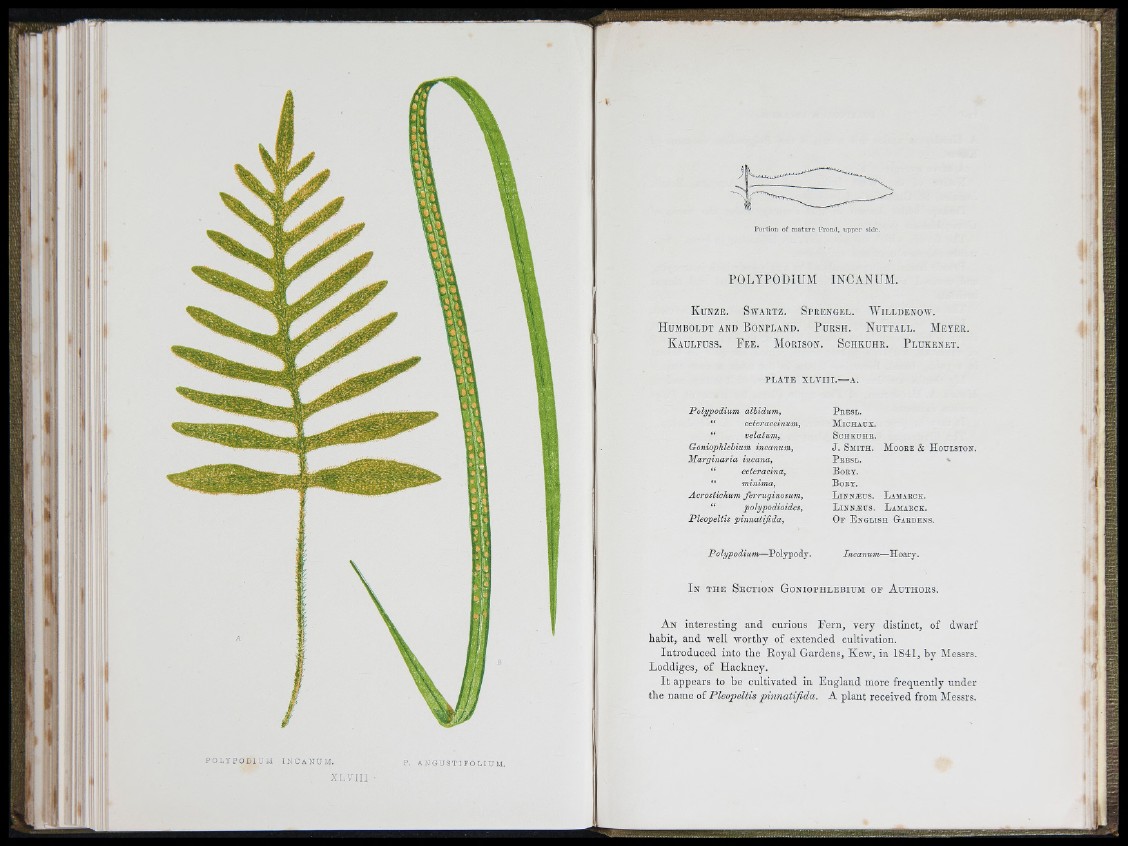
I '
P. A N G U S T I F O L I U M .
l i
Portion of mature Frond, upper side.
rOLYPODIUM INCANUM.
K unze. Swartz. Sprengel. AVilldenow.
H uiMboldt and B onpland. P uR sn . N uttall. M eyer.
K aulfuss. F e e . M orison. Schkuhr. P lukenet.
P L A T E X L V I I I .— A.
Polypodium alhidum,
“ ceteraccinum,
“ velatum,
Gonioplilehium incanum,
M arginaria incana,
“ ceteracina,
“ minima,
Acrostichum fe rruginosum,
p in n a tifid a ,
P e e s l .
M ic h a u x .
SCHICUHE.
J . S m i t h . M o o e e & H o u l s t o n .
P e e s l . .
B o e t .
B o e y .
L in n æ u s . L am a e c k .
L in n æ u s . L a m a e c k .
O f E n g l i s h G a b d e n s .
Polypodium—Polypody. Incanum—Hoary.
I n t h e S e c t i o n G o n i o p h l e b i u m o f A u t h o r s .
A n interesting and curious F e rn , v ery distinct, of dwarf
habit, and well worthy of extended cultivation.
In tro d u c ed into the Eoyal Gardens, Kew', in 1841, by Messrs.
Loddiges, of Hackney.
I t appears to be cultivated iu E ng lan d more frequently under
the name of Pleopeltis pin n a tifid a . A plan t received from Alessrs.